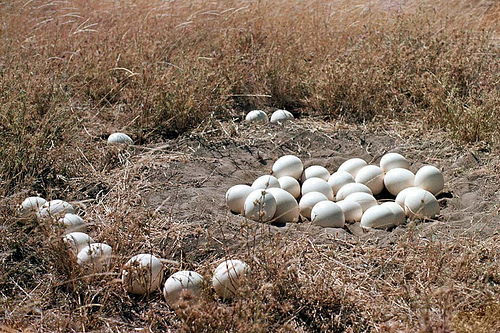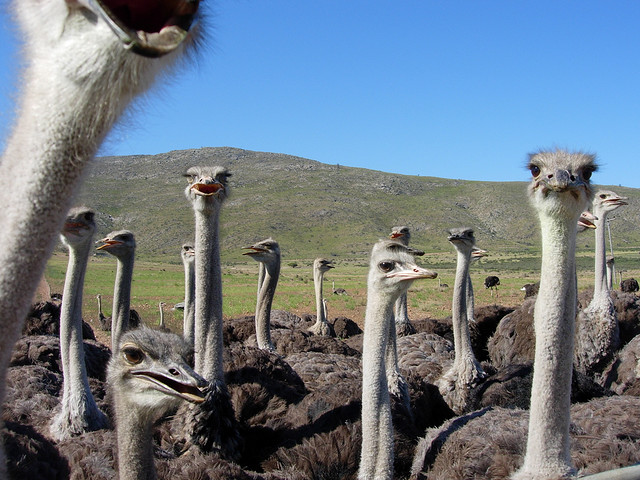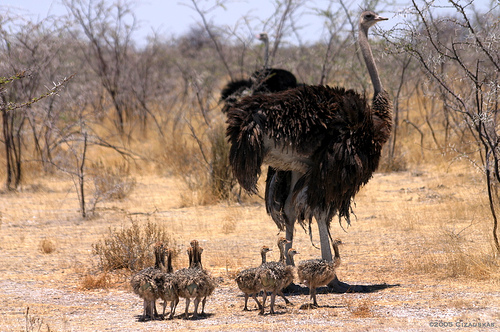
Reproduction
Ostriches are a herding breed. This means that they travel in flocks with numbers ranging from 5 to 50 , and could be considered to be "family oriented". Ostriches are ready to start reproducing then they are 3 to 4 years old. Before any type of procreation can occur, there is a courtship that must happen between the male and female ostrich. The black and white male will use his beautiful coloring to attract a female, who is a light brown. That is when the show really begins. The male will literally bow his head, and then begin to wave and shake the feathers- alternating what wing his is shaking. And the whole time his wings are moving, his tail feathers are moving up and down. Depending on what the female does- accepts or decline- he will be able to move towards her. While he advances on her, he will hold his wings out, and continue to stomp! What a show off! This courtship can be seen by checking out this link: http://www.youtube.com/watch?v=ZWnNQH08l2I
Ostriches are polygamists- the male will choose 3 to 5
hens(female ostrich) to mate with. Mating will usually
occur before the rainy season, and will last about 5 months. The ostrich species is a
bisexual, complex group. This happens so that the chicks
will be able to get enough water and nutrients for there first
few months of life.
The male will dig out a shallow nest in the ground, where his
hens will all lay their eggs. This will create about 25
eggs to be laid and hatched. Ostrich eggs are very large.
They are 5-6 inches, and weigh anywhere around 3 pounds.
Since they are so large, and so many in this "clutch nest"
setting, usually only half of the eggs survive due to predators.
During the day, the dominant female will incubate the eggs.
At night, the male will incubate the eggs by laying on them.
the colors of the male (dark feathers) help to protect the eggs
by camouflaging them. Likewise, during the day, the
females light brown feathers blend in with the soil. The
eggs have a white shiny external and an enamel that is perfect
thickness for incubation and protection. Research is being
done on the incubation process with the egg so that
humans can use them for consumption,
since they are so unique and large. The eggs will take
around 40 days to hatch.
Once hatched, the chicks are well protected. They have their parents as body guards, as well as other members of the flock. They will follow the parent around (as shown in the above picture) similar to other types of birds. After the chicks have reached several months maturity, their survival rate greatly increases. Do to how the ostrich interacts with other animals, they were becoming scarce do to excessive hunting. But the numbers of ostrich are slowing starting to rise in nature, and there are lots in captivity.
To learn more about ostrich reproduction, take a gander at the Animal Diversity Website.

